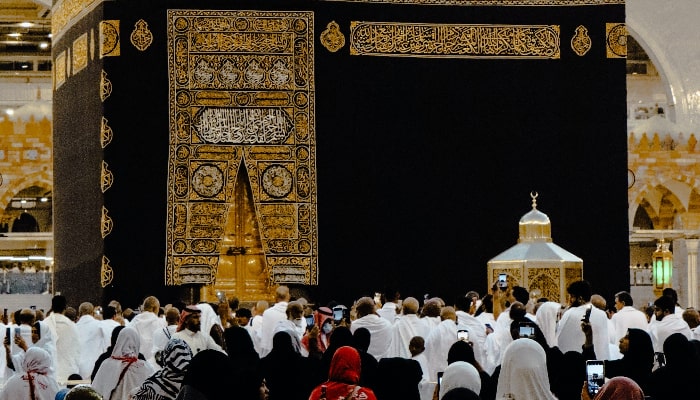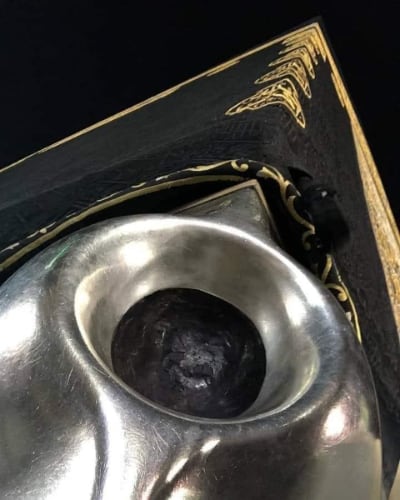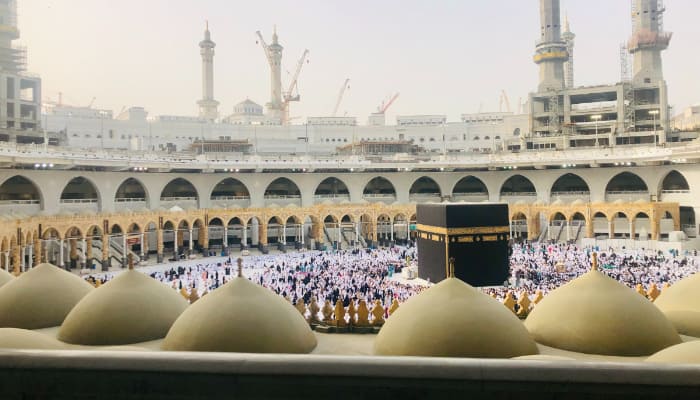Every Muslim desires to perform Hajj in the Holy Land. The motivation to go there was simply to come closer to Allah Swt and see the Kaaba, the first human-built worship sanctuary. For Muslims, the Ka’bah has been the most important and holy location of devotion for thousands of years.
Allah Swt made the Kaaba the Qibla of Muslims since the second year of the Hijri. Since then, Muslims are required to pray facing the Kaaba. All Muslims also have an obligation to make the pilgrimage, provided they are able and qualified to visit it. This is in accordance with the word of Allah Swt in the Qur’an surah Ali-Imran:
“Indeed, the house that was first built for men, is Baitullah in Bakkah (Mecca) who is blessed and guides all men. On him were visible signs, (among them) Maqam Ibrahim; whoever enters it (Baitullah) is safe; Performing Hajj is man’s duty towards Allah, that is, (for) those who can travel to Jerusalem. Whoever denies (the obligation of Hajj), then verily Allah is rich (does not need anything) of the universe.” (QS. Ali’ Imran: 96-97)
Also Read: Baca Doa Ini Saat Melihat Ka’bah di Masjidil Haram, Hajat Insyaallah Qabul
Before going to Mecca to see the Kaaba and worship there, it’s good first to recognize the parts of the Kaaba so that the maximum worship we do in the Haram Land.

The Parts Ka’bah
The Kaaba is inside the holy building of the Masjidil Haram. The mosque was built around the Kaaba and became the main destination for Hajj and Umrah pilgrims. Each part of the Grand Mosque has its history and virtues. Let’s get to know the following parts of the Kaaba:
Hajar Aswad
Hajar Aswad is located to the east of the Kaaba. This object is believed to be a stone that comes from heaven. According to some regions, Hajar Aswad used to be white. However, due to human sins, the color of this stone turned black. When visiting the Kaaba, worshippers are encouraged to kiss it. But if it is impossible, it is enough to touch it or make gestures with your hands or fingers.
Also Read: Kapan Waktu Pelaksanaan Ibadah Haji? Ini Penjelasan Menurut Al-Quran

Maqam Ibrahim
This place is inside the Grand Mosque, precisely on the east side of the Kaaba. Although named Maqam Ibrahim, but this place is not the tomb of Prophet Ibrahim (as), but a former footrest of Prophet Ibrahim when building the Kaaba. When visiting the Holy Land, worshippers are encouraged to pray on the back side of Maqam Ibrahim.
Hijir Ismail
According to history, Hijir Ismail was the abode of Prophet Ismail (as). Hijir Ismail is semicircular and located on the north side of the Kaaba, precisely between the Shami Pillars and the Iraqi Pillars. Hajj and Umrah pilgrims are encouraged to perform prayers wearing ihram, then facing towards Mizab Ar-Rahman. The prayer in Hijir Ismail is believed to be the same as in the Kaaba.
As the name implies, Hijir Ismail was built by Prophet Ismail and is included in the list of holy buildings of Muslims. Prophet Ibrahim entirely built the Kaaba itself, then Prophet Ismail came to help his father with a stone.
Mizab Ar Rahman
Mizab Ar-Rahman is a gutter above the Kaaba. While here, the congregation is encouraged to pray to face the Mizab.
Also Read: Kapan Waktu Pelaksanaan Ibadah Haji? Ini Penjelasan Menurut Al-Quran

Syadzarwan
Shadzarwan is the part around the wall of the Kaaba, precisely on the lower lip of the foundation of the Kaaba.
Multazam
Multazam is part of the Masjidil Haram which is believed to be a mustajab place for prayer. Multazam is between Hajar Aswad and the door of the Kaaba. Multazam is part of the walls of the Kaaba. In one narration, it is said that if people repent and ask for forgiveness here, then Allah will forgive them. How special is Multazam, it is not surprising that this place is hunted by Hajj and Umrah pilgrims after doing tawaf.
Also Read: Harga Kambing Kurban 2023 & Tips Cara Menabungnya
Yamani Pillars
The Yamani pillar is on the southwest side of the Kaaba, precisely before Hajar Aswad from the direction of the tawaf. This place is in the direction of Yemen, hence the name Yamani Pillars. When in Yamani Pillar, pilgrims are encouraged to wipe it. But the congregation is not required to kiss, direct hand signals, or rub hands on the face after rubbing it.
(Dompet Dhuafa/Ustaz Ahmad Fauzi Qasim/Ronna)


